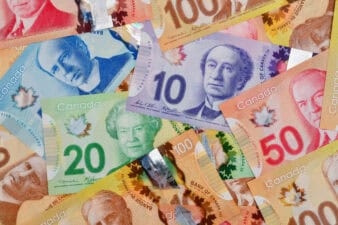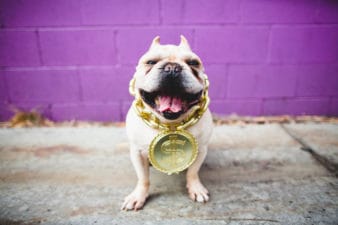Maybe Ray Dalio was right. Cash is trash if you’re hoarding it with no plans to invest it. With central banks around the world cutting interest rates in response to the coronavirus outbreak, it seems as though the race to zero, or potentially negative, interest rates is on. At 1.25%, there’s not much room to cut further without hitting the floor.
Many pundits expect to see another 50 basis points cut from the Fed, with the Bank of Canada poised to follow suit. If that’s the case, we’ll be at 0.75% and should economic pressures continue to weigh on economic growth, we’ll be headed into uncharted waters as far as interest rates are concerned.
It’s almost impossible to fully understand the economic consequences of a “lower for longer” or negative rate environment. But it’s easy to see that such an environment will not be kind to savers.
Consider that we’re already in an era of rock-bottom interest rates. You’d be pressed to get a satisfactory rate of return from risk-free assets with rates as low as they are. As rates inch closer to zero, the thought of negative interest rates is on the minds of folks on Bay and Wall Street.
Picture paying the bank for holding your cash or buying bonds that are guaranteed to lose money. It can seem nonsensical, especially for the extremely risk-averse who use their TFSA (Tax-Free Savings Account) to store cash.
A generational lack of opportunity
In a prior piece, I described the low-rate environment as a generational lack of opportunity for savers or those reluctant to take the risk that comes with equities.
Today, any risk-free return above inflation is negligible. And if you’re overweight cash and cash equivalents, that’s a serious problem. You’re just not going to build much wealth by playing it safe.
While shying away from risks is known to be bad for young investors, we’re reaching a point where it’s becoming nonsensical for older investors (like retirees) to be overweight in risk-off, low-return assets.
It’s just tough to be a retiree these days.
Cash should come with a warning label
Warren Buffett thinks that bonds, which are “risk-free” investments, should come with a warning label. And like with most things related to investing, he’s completely right. While it’s true that your cash and bonds won’t lose 15% of their value in a week, it’s also true that hoarding such “safe” assets comes at a high cost — opportunity cost.
There’s no downside risk per se, but there is upside risk. And it’s this upside risk (risk of missing out on upside) that’s heavily discounted by risk-averse investors. As rates fall, cash, like bonds, will sit there and not grow the way they used to. It’s now taxing to be a saver, so in this era of generationally low interest rates, one must adapt.
The investment styles used by prior generations won’t work out nearly as well in the modern era. But that doesn’t mean you should dump all your savings and risk-free assets into equities, especially if you’re easily rattled by volatility.
Cash has its place in portfolios. Just ask Warren Buffett, who’s sitting on a mountain of $128 billion in cash. The markets, as you may know, can be subject to stomach-churning amounts of volatility. Just look to last week as an example of what to expect! It’s always a good idea to have dry powder on the sidelines, so you have the option to buy stocks without having to sell.
Holding a percentage of your wealth in cash is fine and dandy, even as rates continue to plummet. Just know that you will lose out by being a saver, and not an investor. You’re getting next to nothing in terms of real return by saving, and eventually, you could end up paying the price for your severe risk aversion.
What’s the solution?
Dip your toe into the investment waters with bond proxies like Fortis. You don’t need to make a splash, but getting comfortable with volatility is the first step on the road to turning from a saver, who’s destined to lose, into a prudent investor.
Stay hungry. Stay Foolish.








